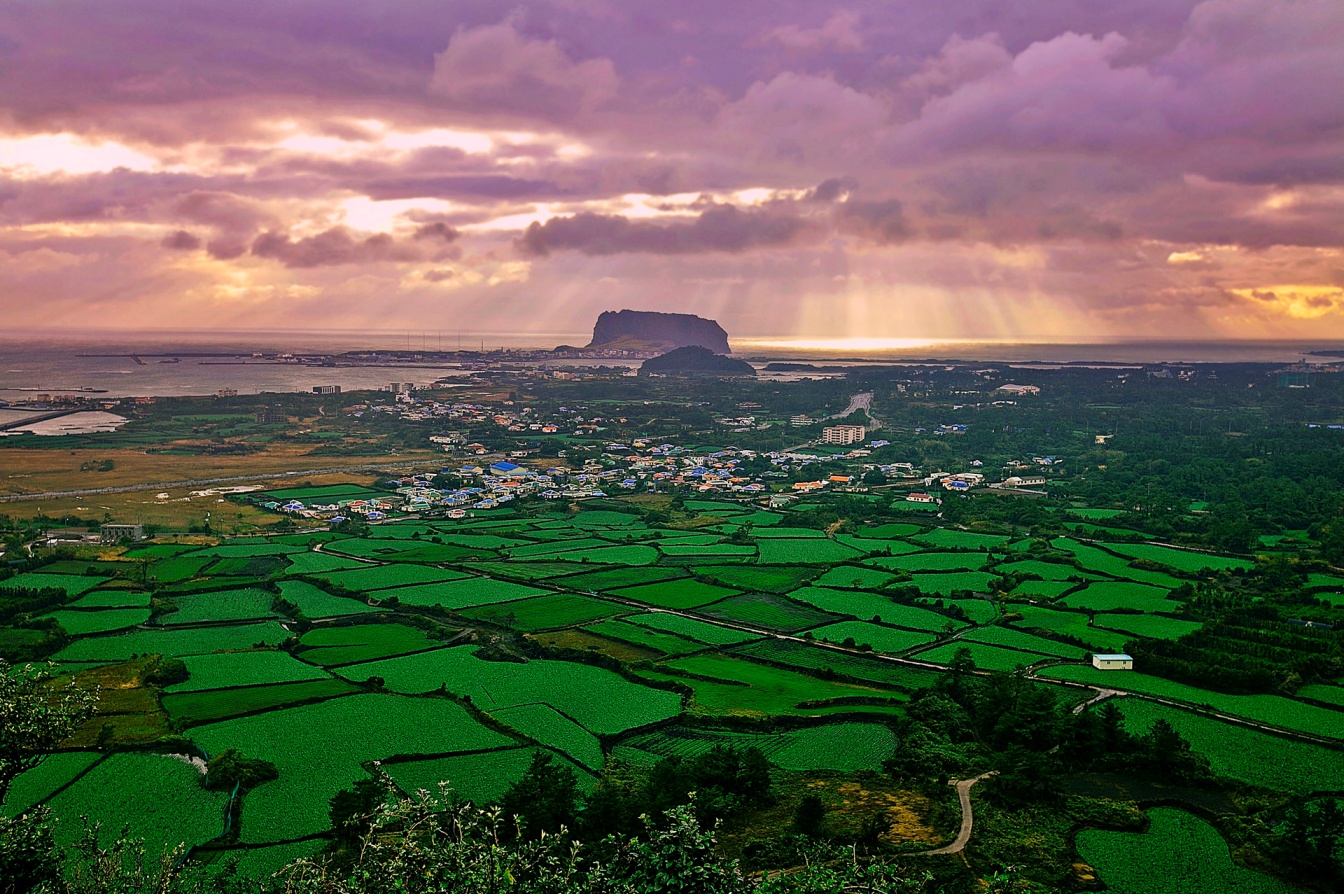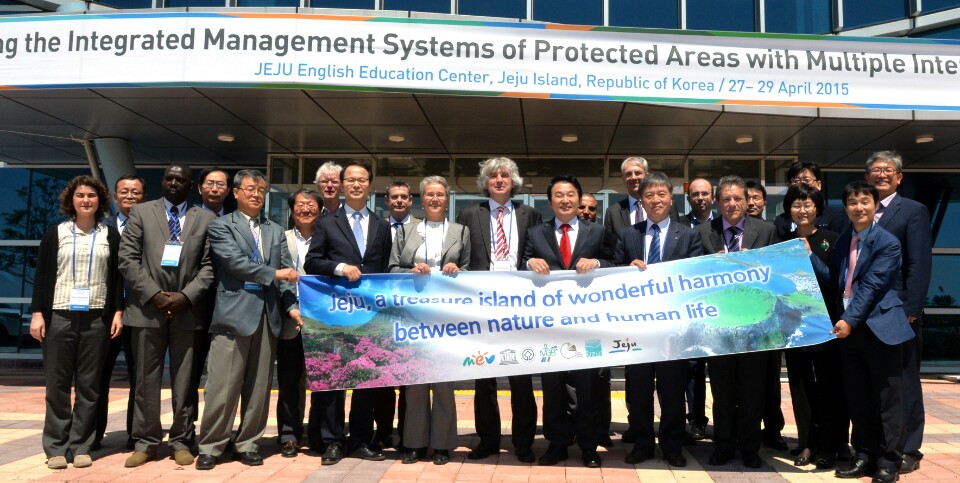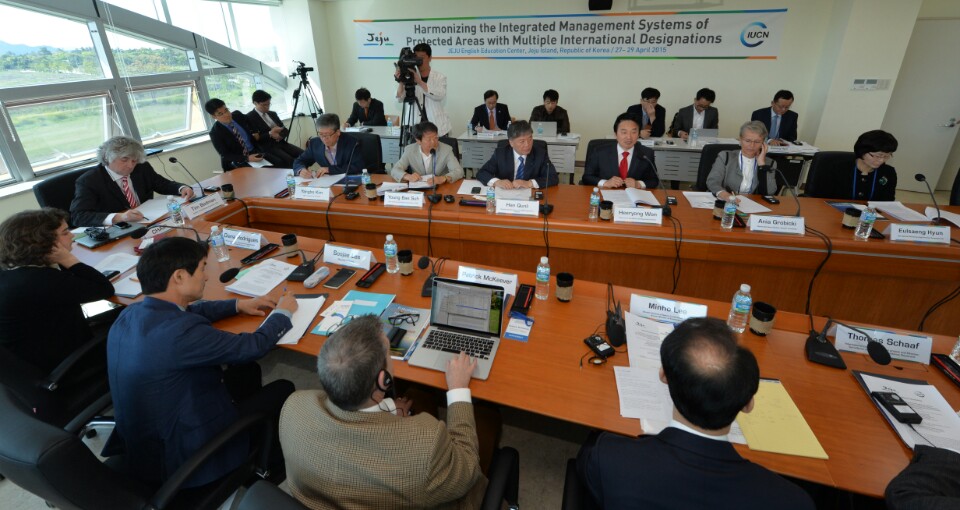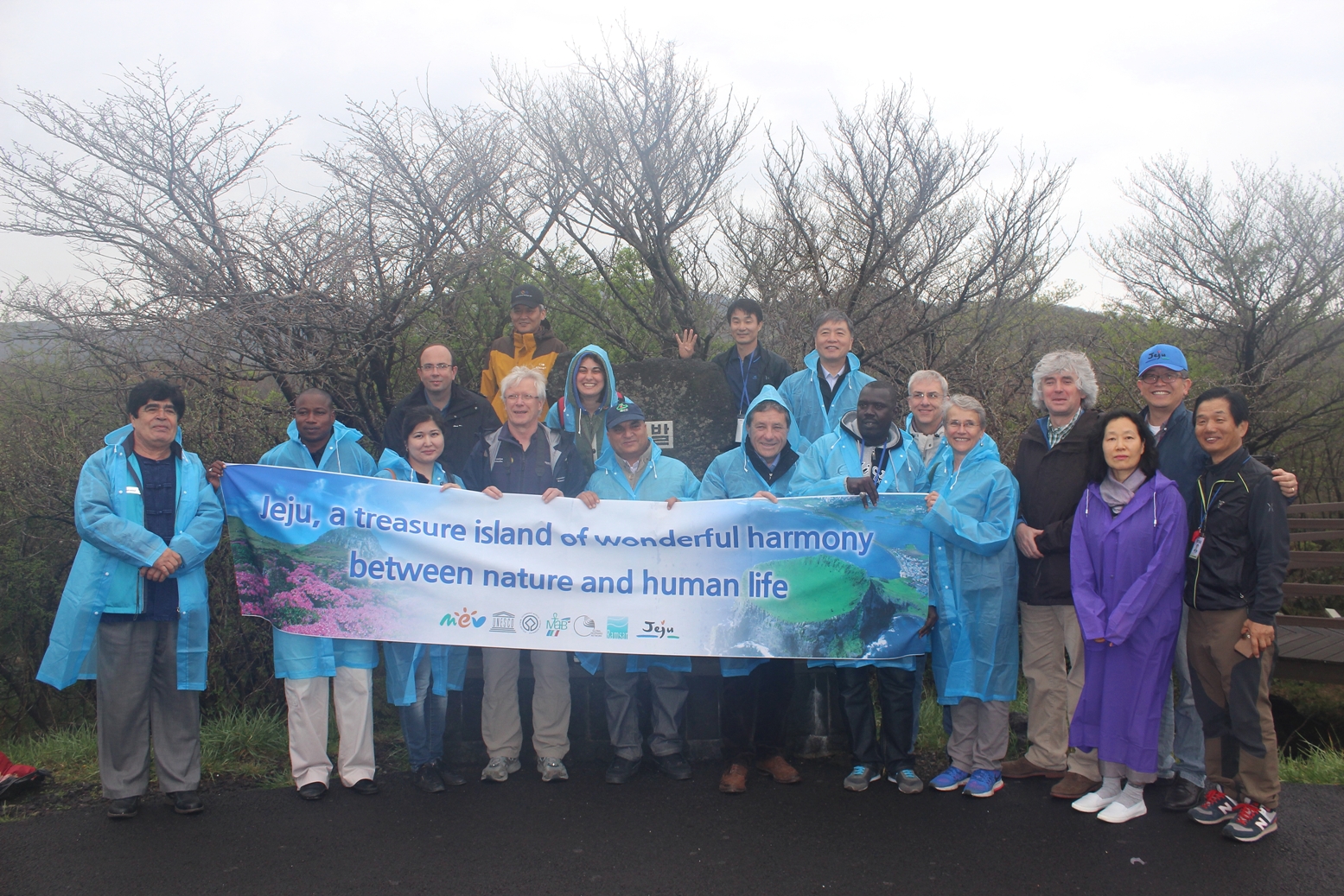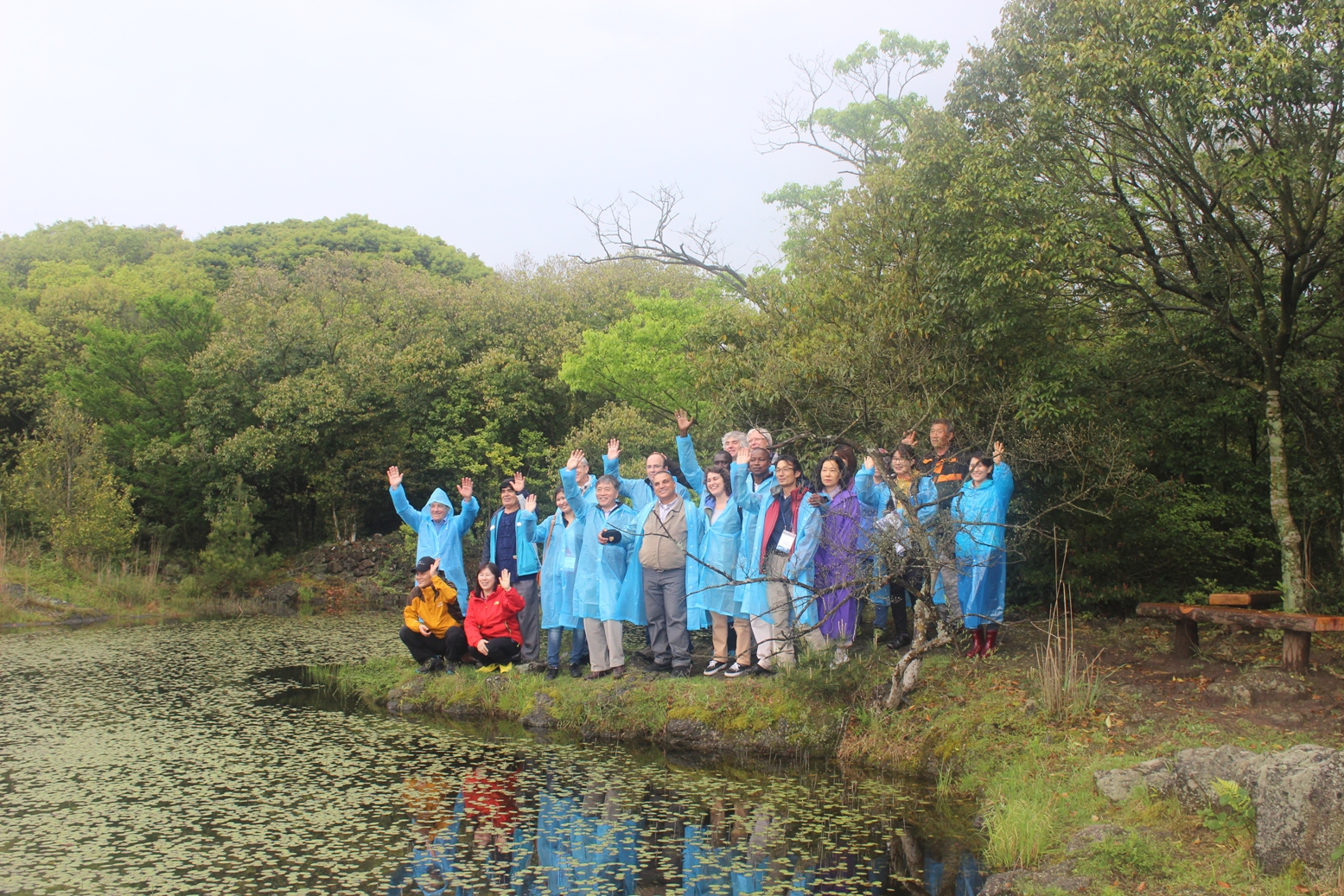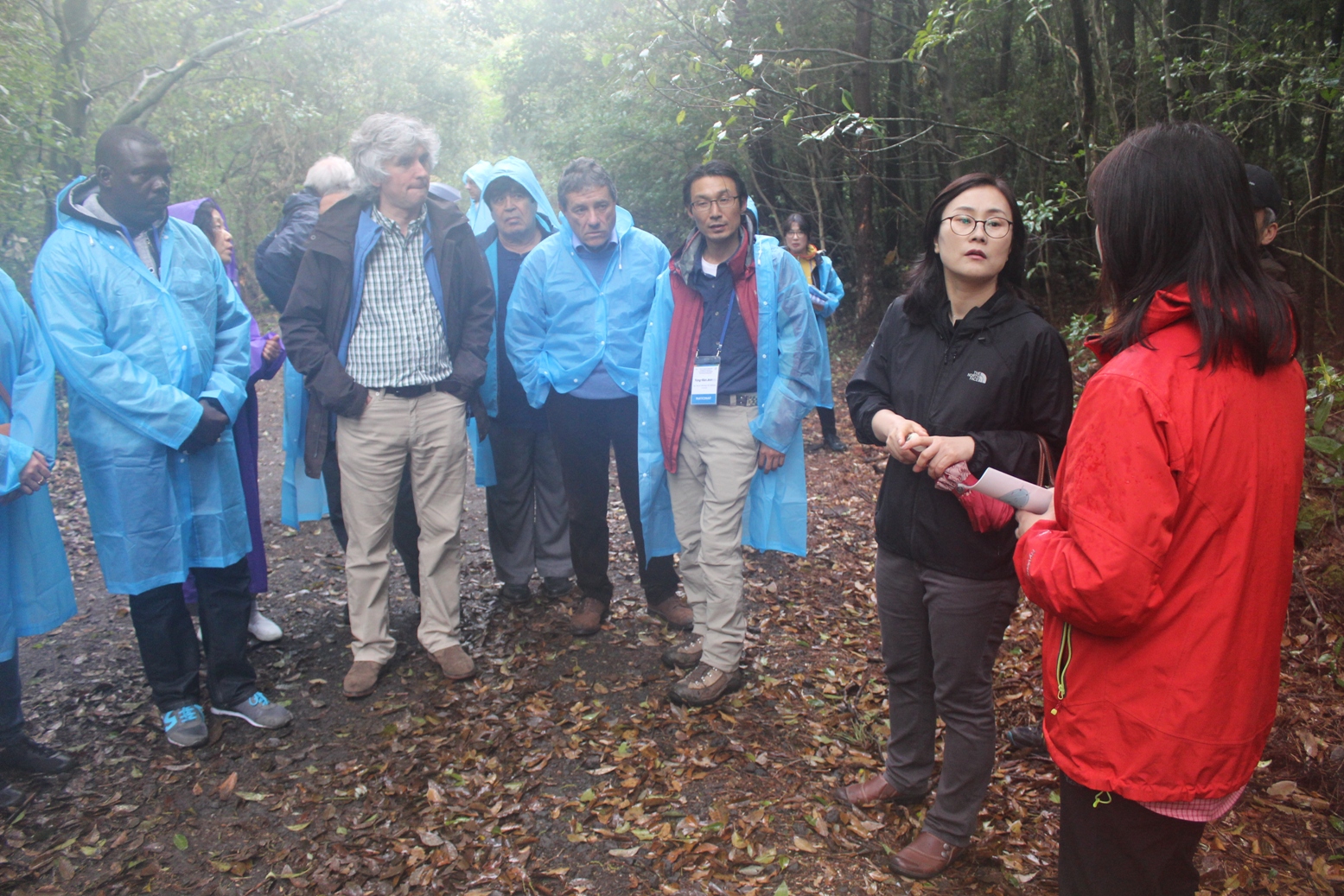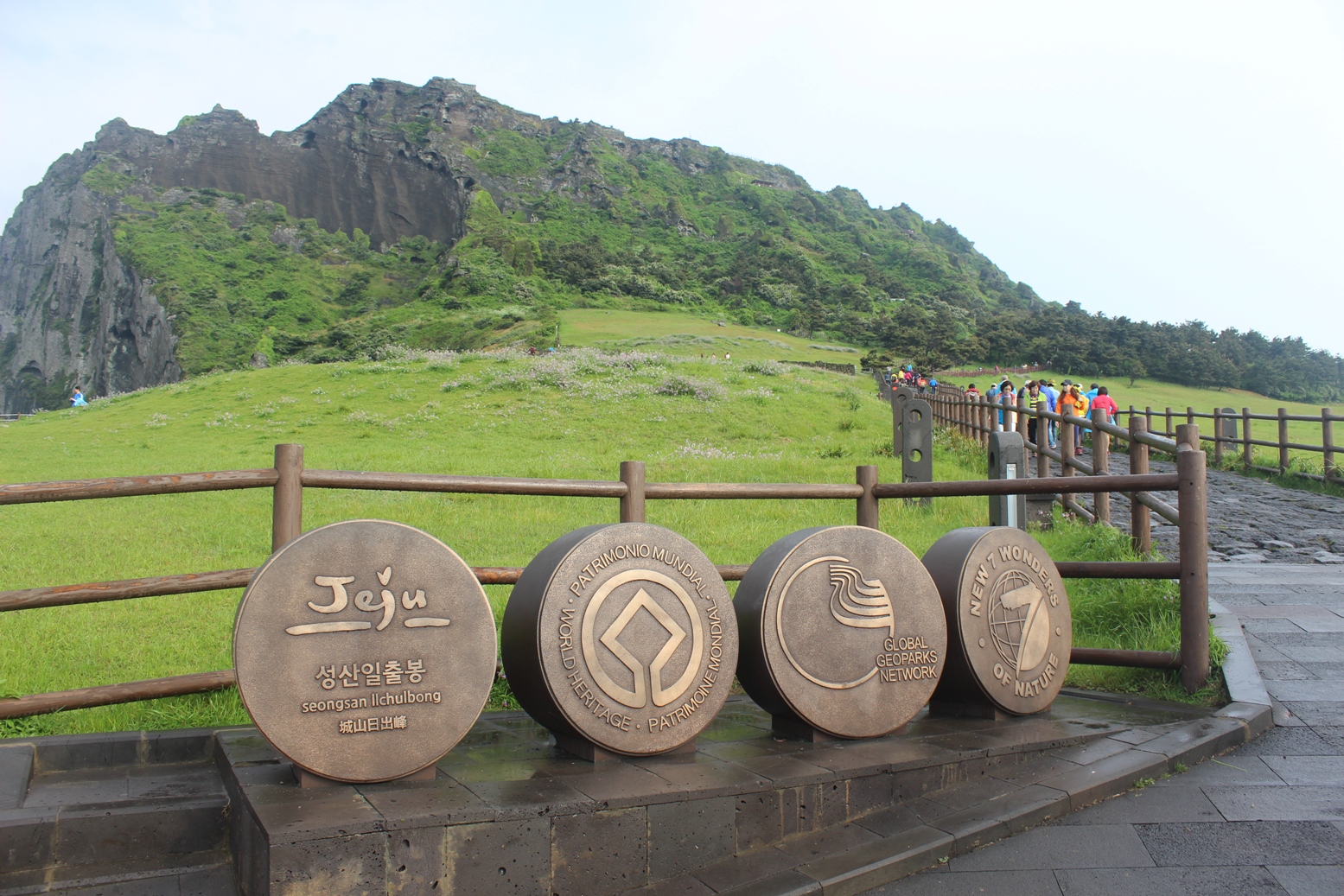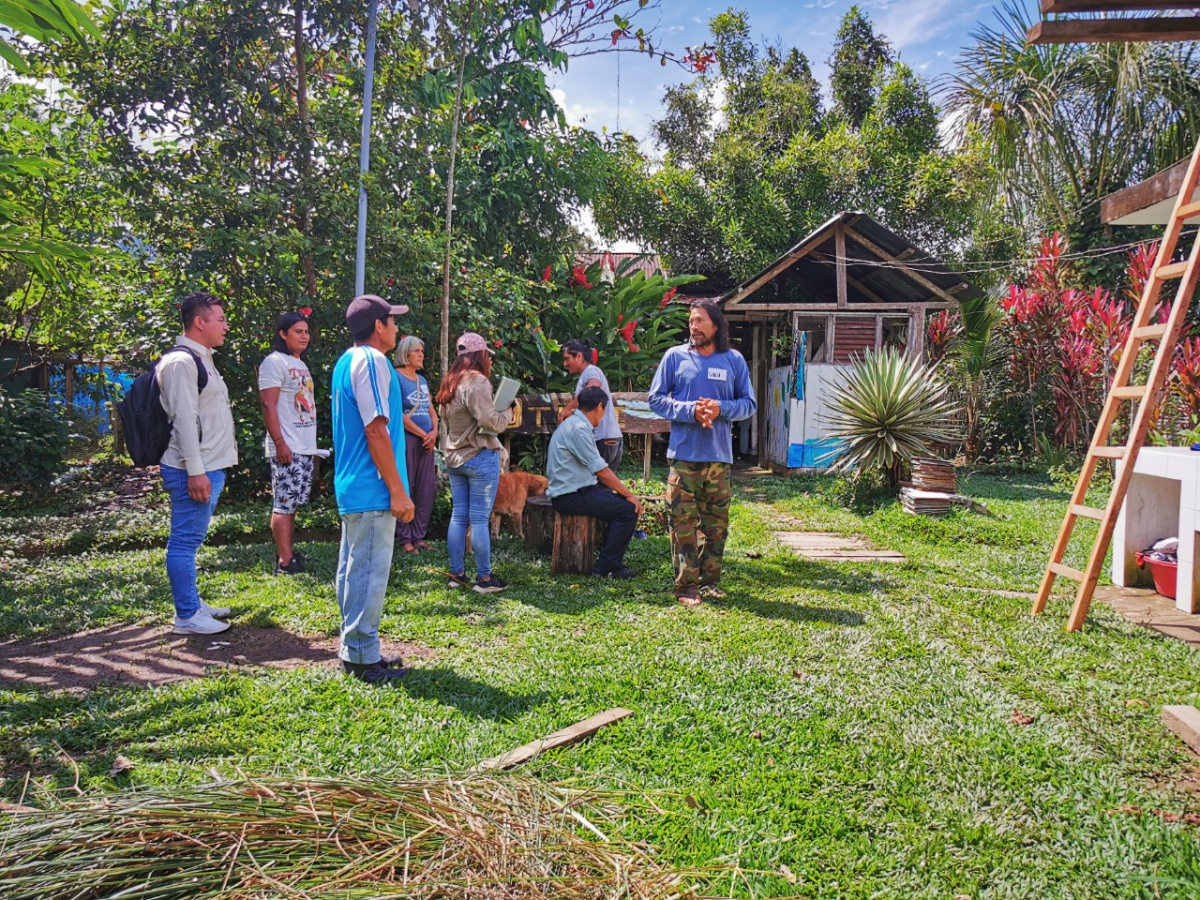A step forward for the most recognised areas on the planet
Imagine you were awarded an Olympic medal for your athletic performance, a Michelin star for your cooking skills and the John C. Phillips Memorial Medal for your conservation work, would you be able to keep all three skills up to the highest standard? Now imagine a natural area that is partly listed as a World Heritage site overlapping with a Biosphere Reserve, contains four Ramsar Wetlands of International Importance, all of which are incorporated into a wider Geopark – is it possible for all four international designations to be harmoniously managed?
Such a place in fact does exist: Jeju Island, in the Republic of Korea, which set the scene for a workshop focused on “Harmonizing the Integrated Management Systems of Areas with Multiple International Designations (Ramsar Sites, World Heritage Sites, Biosphere Reserves and Global Geoparks)”. Organized by IUCN and the Jeju Special Self-Governing Province, the event brought together senior representatives of UNESCO and the Ramsar Convention as well as site managers from all over the world from 27-29 April 2015.
The workshop results from an IUCN Resolution (WCC 2012 Res 052), which was adopted by IUCN Members at the 2012 World Conservation Congress. Participants, who included site managers from the Republic of Korea, Kazakhstan, Tunisia, Germany, Italy, Portugal, Niger and Senegal, together with senior representatives of all four designating bodies, discussed proposals to harmonize or improve the management of this type of areas. The aim is to realize the opportunities for synergies and identify solutions for the management problems that can occur in areas with multiple designations, and to prepare written guidance on this issue to be launched at the 2016 IUCN World Conservation Congress in Hawai’i, USA.
“This is the first step in implementing IUCN’s 2012 Resolution 52 by improving the coordination and integration of management practices which will reduce duplication and save precious resources, allowing sites to concentrate funds on protecting natural heritage,” said Tim Badman, Director of IUCN’s World Heritage Programme, who chaired the workshop. “It is a great achievement to get all the key organisations in this one workshop. It is the first time we have all worked on a joint project”.
To date there are 2,208 Ramsar sites, 228 natural World Heritage sites, 651 Biosphere Reserves and 111 Global Geoparks the world over. Many of these areas carry multiple designations. For example, about 110 sites are listed as both natural World Heritage and Biosphere Reserves, some 180 sites figure both on the Ramsar and Biosphere Reserve lists, over 50 present three of the possible four denominations, and one site – Jeju Island – includes all four designations.
All four international designations provide instruments that support conservation and contribute to sustainable development. They are designed to encourage national governments and local communities to identify special places that should be protected and used sustainably by present and future generations. However, as they grow in popularity and number, the potential for confusion arises. It is, therefore, essential to develop guidance to understand how these instruments function, how they differ, and how they may complement each other.
During the workshop, very fruitful discussions were held on the management challenges and benefits of areas with multiple international designations, with an emphasis on the complementarities and synergies that multiple designations can offer.
At the local management level, proposed recommendations included for example the development of a single management plan for all existing designations of an area. This would include common strategies on sustainable land use, development and ecotourism, and awareness campaigns to help local communities and visitors understand the purpose of international designations.
At the international level, proposed recommendations included better coordination and information sharing between the different governing bodies during nomination and reporting processes. For example, overlaps between the different timelines and information requests could be tracked and harmonized where possible. Another much discussed recommendation was the need to develop guidance on how to brand and promote these areas. Participants agreed that unified branding would reinforce the values and recognition of the different designations, highlighting a sense of unity rather than competition between labels.
The generous proposals of the Jeju Special Self-Governing Province to establish an international network of sites with multiple international designations and create an international training centre on the management of these sites based in Jeju Island were also very well received by all workshop participants.
This workshop is part of a broader joint project of IUCN and Jeju that aims to gather experiences on joint management for the conservation and management of areas with overlapping international protection designations, in partnership with the Korean Ministry of Environment, the Ramsar Convention, the World Heritage Convention, UNESCO’s Man and Biosphere Programme, and the Global Geoparks Initiative.
A side event on this project will also be held at the 39th session of the World Heritage Committee in Bonn, Germany on 30 June 2015.
For more information, please visit the project's website or contact Diana Rodrigues, IUCN Project Coordinator – Internationally Designated Areas, diana.rodrigues@iucn.org.
